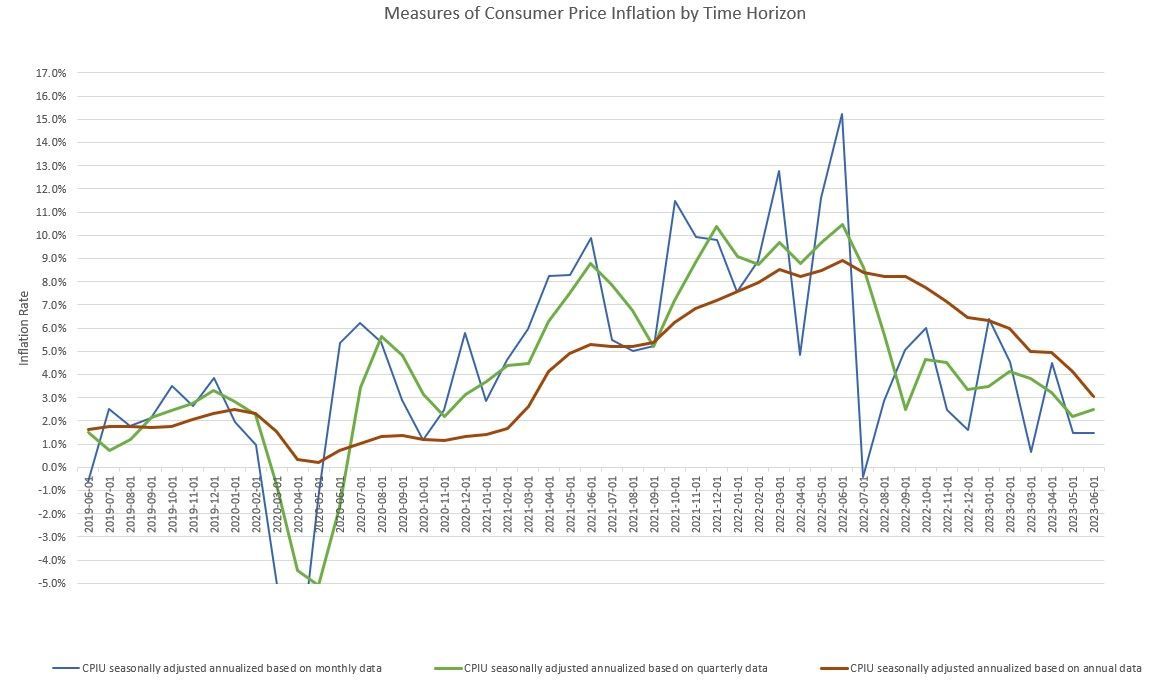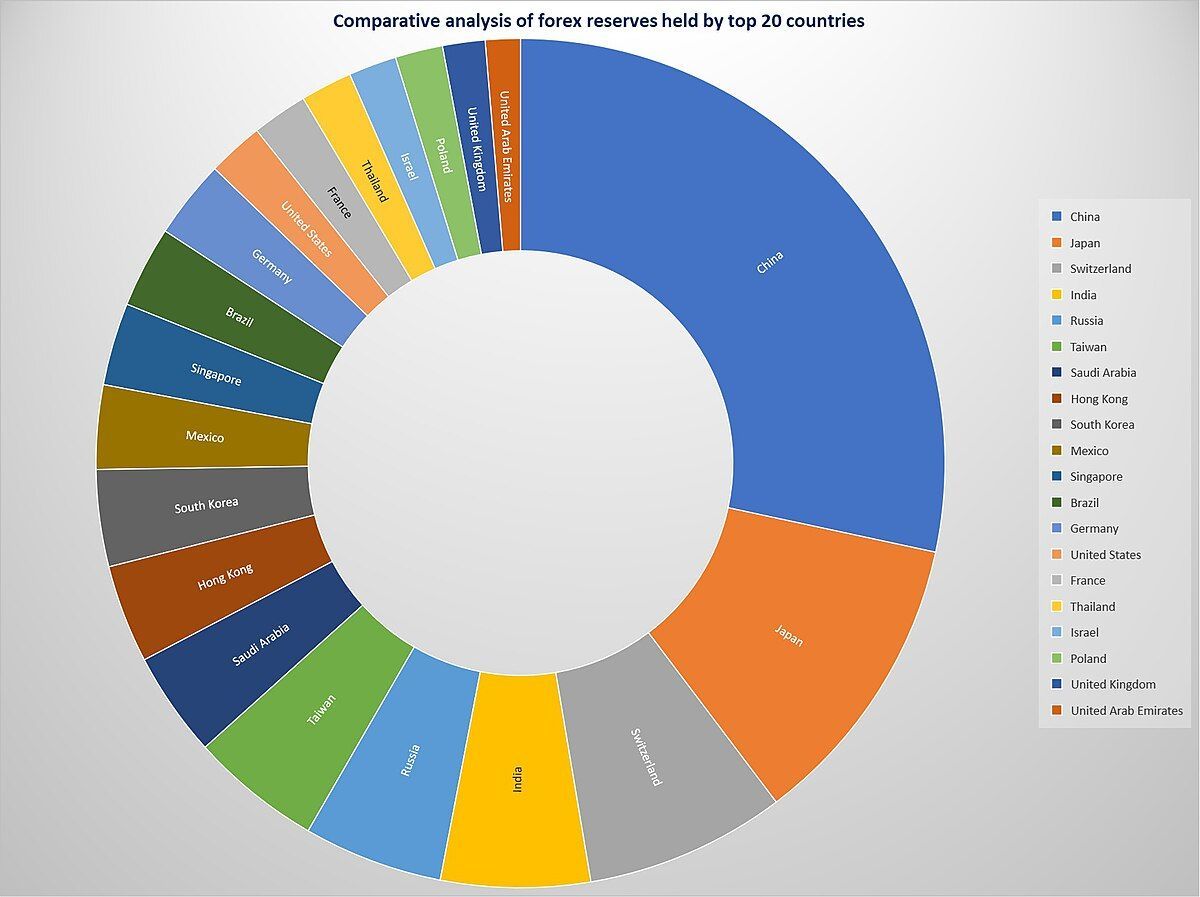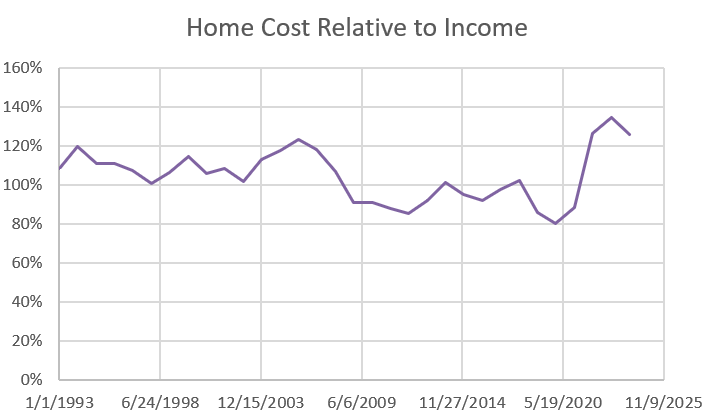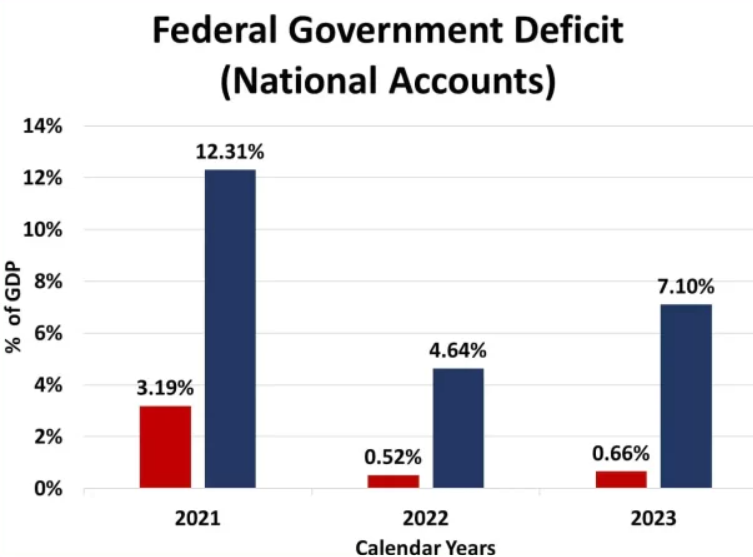Colin Read • July 9, 2023
Schrodinger's Cat and Inflation - July 9, 2023

We will find later this week whether inflation has come down to the three percentage point range. There is a far-fetched probability that we may even find ourselves in the twos.
The rate of inflation in prices from June 1, 2022 to June 1, 2023 has already occurred, even if we haven’t yet measured it yet. A bit like Schrodinger's Cat, something has occurred, regardless of whether we have observed and responded to it.
All will be revealed on Wednesday. On that day, what we realize about prices will then affect our behavior. The problem is that the Federal Reserve has been raising the interest rate almost every month with unprecedented frequency but is concentrating on its effect on data that is upwards of a year old.
The same analogy holds for economic growth. That data comes out quarterly rather than monthly, and also with some delay. Next week, the price level from June 1, 2023 will be revealed, delayed for weeks, while GDP figures are delayed by three weeks following the close of the quarter.
While it is perhaps natural for people, even many sophisticated players, to focus on simple measures such as the delayed inflation figures, we can look at other leading indicators of economic trends to give us an idea of where the economy is going. For the economy to grow, jobs must be filled and supplies purchased. Perhaps three or six months later for some simple products, or significantly longer for products that take a long time to produce, these investments in job creation, supply purchases, and inventory finally result in sales that are then incorporated into Gross Domestic Product figures.
In this blog we have in the past focussed not on how prices have risen since the same time a year earlier, but how they are rising today. Knowing that prices can take large jumps if volatile energy prices shift, annualized quarter-to-quarter price changes may be more meaningful than month-to-month price changes at times.
Either of these measures, and even the half-to-half measure, offer a better picture of how the economy is currently performing.
In many ways, these trailing indicators of the economy are far more meaningful now. A year ago we were still suffering the high energy costs following the invasion of Ukraine. The war also introduced all sorts of gyrations, in food, energy, construction, a shift toward armament production, etc. that are not nearly so destabilized over the past six months, three months, or a month ago compared to this same time last year.
For these reasons, we will find on Wednesday that the worst of the 2022 price shocks have finally dropped off of the official year-to-year inflation figure. If prices since May 2023 rise by about the same amount as the previous month, we will find the official inflation rate will drop from 4.1% to around 3%. If the most recent month-to-month price increase is negligible, the inflation rate may even fall into the magical twos that is the apparent goal of the Federal Reserve. The dramatic drop in inflation is not magic - it is just arithmetic.
Now you see why opening the box and discovering whether Schrodinger’s Cat is dead or alive actually mattes. Even though we are merely measuring the past, and perhaps, economically speaking, even the distant past, the figure affects our psyche and our policies.
Let’s say we find out on Wednesday that the “official” inflation rate is actually in the range of 2-3% rather than the 4% range revealed last month and the peak approaching 9% just a year earlier.
All of a sudden, the Federal Reserve realizes the economy has the inflation rate the Fed deems appropriate. While labor markets remain tight, they have loosened a bit, with a lower rate of job creation, quits down, and unemployment holding steady in the mid three percentage points that has become the new normal.
Does this mean the Fed undigs its heels and no longer makes two more quarter point increases that many still expect? Probably not.
The Fed has been sending a clear message that it is fighting inflation and an overheated economy with such consistency and tardiness that it can hardly stop on a dime. Instead, it will taper the discount rate up another half point over the next few months, and then call for a time out.
Currently, the rate will be 5.25%, which is triple the rate of 1.75% one year ago. If the Fed tapers to 5.75% and can live with a 2.75% inflation rate rather than the traditional two percent goal, the real (inflation-adjusted) interest rate will be 5.75% - 2.75%, or a 3% real yield.
A three percent real interest rate is within the range of real rates, even if it remains slightly on the low side compared to the pre-1990s range and about the same we sustained over the economically stable and strong 1990s.
A real interest rate elevated to the 3% range also offers the Fed some room to lower interest rates if it finds economic output is flagging. The Fed’s hands were tied for a decade and a half when it held real interest rates at or below 1% since the Great Recession of 2008.
Speaking of recessions and Schrodinger’s Cat, are we in one now but don’t know it? Not yet. More people working will translate into sustained consumption. Only when Fed policy becomes a significant drag on construction and business investment in new plants, equipment and inventory will we start to see falling output that is the hallmark of a recession.
The fly in the ointment is that markets will let out a collective sigh of relief when they finally realize inflation has been moderated for some time. The hope will be that the Fed will take its foot off the brake, even if it does not press the accelerator.
The situation becomes one of Sherlock Holmes trying to outwit Moriarity. Holmes knows his best option is to get off the train one stop before Victoria Station where Moriarity has set a trap. Moriarity knows how Holmes thinks, and shifts his trap to the station before Victoria. But then Holmes knows Moriarity is smart, and decides to get off two stops before Victoria Station. This cat-and-mouse game keeps the market guessing what the Fed may do so it can’t inoculate itself from Fed surprises. Such is the game-theoretic strategy described by John Nash of A Beautiful Mind fame.
The Nash equilibrium is then likely a 5.75% discount rate, a slightly higher than traditional but nonetheless stable inflation rate in the 2% range, and stable but not spectacular output and wage growth. If we can all look at this new inflation rate and live with it rather than respond with higher wage demands, we may just be able to attain the mild inflation and stable economic variables that the Fed hopes to navigate.
That is the Fed’s challenge. The Fed knows what prices are doing, but perhaps doesn't mind letting the public fret about the worst of inflation that has long since passed. It gives them the green light to keep administering its economic medicine even though the patient is getting better.
Let’s see how we react once the reality of the past nine months is revealed to us over the next week and months. This is an excellent opportunity to observe how sensitive the economy is to evolving and manipulated expectations. These expectations will determine whether economic stability is based on what actually occurred in the recent past or what will occur over the next year.
As an aside, did you know that the global mean temperature for every day this past week exceeded the highest temperature ever recorded, and by a substantial amount? That's seven record breaking days in a week. In looking at long term evidence of global temperatures, some scientists have concluded these seven record-breaking days were the hottest in 100,000 years. Coincidence? I think not.









